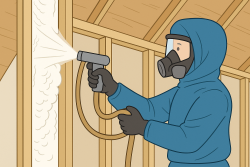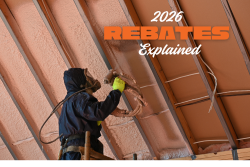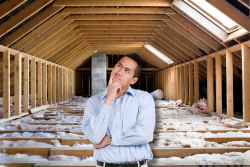Frozen droplets gather to form icicles; you observe these when the outdoor air temperature is subfreezing. Are icicles a sign of bad insulation? Glittering icicles that hang from roofs can create lovely winter landscapes. Icicles might look beautiful, but they are a warning sign of poor insulation. Ice damming happens when snow collects on your roof, and the cycle of melting and refreezing begins, resulting in an ice accumulation.
Snow falls, melts, enters your gutters, and flows away from your roofline in an ideal scenario. Ice dams form when icicles grow on your gutters and eaves, indicating that now these cover your roof. Ice dams can cause harm to your home's inside and exterior. They're a risk from above, and the ice dam that feeds them can cause water to back up under roofs or leak through ceilings and walls.
How do Icicles Form?
In the winter, some days, we are more likely to experience mild winter days where the hot sun melts the snow and causes icicles to develop. These icicles are usually thin and only appear rarely. When you notice icicles forming on your roof, pay attention to the size and consistency of the icicles. The bulkier, more noticeable icicles are frequently caused by heat loss. After a significant snowstorm, there is more snow to melt, so icicles are likely to form. In the winter, temperature swings between hot and cold might contribute to icicle formation.
What do Icicles Mean on a House?
Icicles indicate that you're losing heat and that your attic has insufficient ventilation. The outside temperature and the inner temperature of your attic combine to cause ice damming on your roof. The warmer your attic is, the easier it is for snow to melt on the surface of your roof. When the temperature outside drops below 32 degrees, the odds of snow refreezing increase. This increasing mound of ice obstructs the flow of melting snow, causing an ice dam to form. The most common reason for icicle formation is poor insulation and ventilation in your house.
How to Prevent Icicles Formation?
Homeowners with low-sloped or flat roofs, at times, need to remove snow from the top. However, this is a laborious task and is risky as well. Here we describe more efficient alternatives to prevent icicle formation.
Insulation Between Ceiling and Attic
The best approach to avoid ice damming in the winter is to keep your attic cool. It may seem odd, but keeping the heat in the occupied section of your home and away from your attic is critical. Insulate the space between your home's roof and attic to achieve this. Providing an insulating barrier, such as spreading more batts across your existing insulation or blowing more insulation between the joists, will help keep the heat inside the home and out of your attic.
Insulate the Attic Properly
Make sure your attic is insulated according to the manufacturer's recommendations. Proper insulation helps your attic maintain the same temperature as the outside air, allowing you to keep your home at a more comfortable temperature. Proper ventilation in the attic is also crucial. Ridge vents and soffit vents allow air to circulate, keeping the temperature within your attic balanced and preventing ice dams from developing.
When trying to distinguish whether your home needs insulation or not, feel free to reach out to Reitzel Insulation, and we would be more than happy to help you out with a free on-site estimate!

















